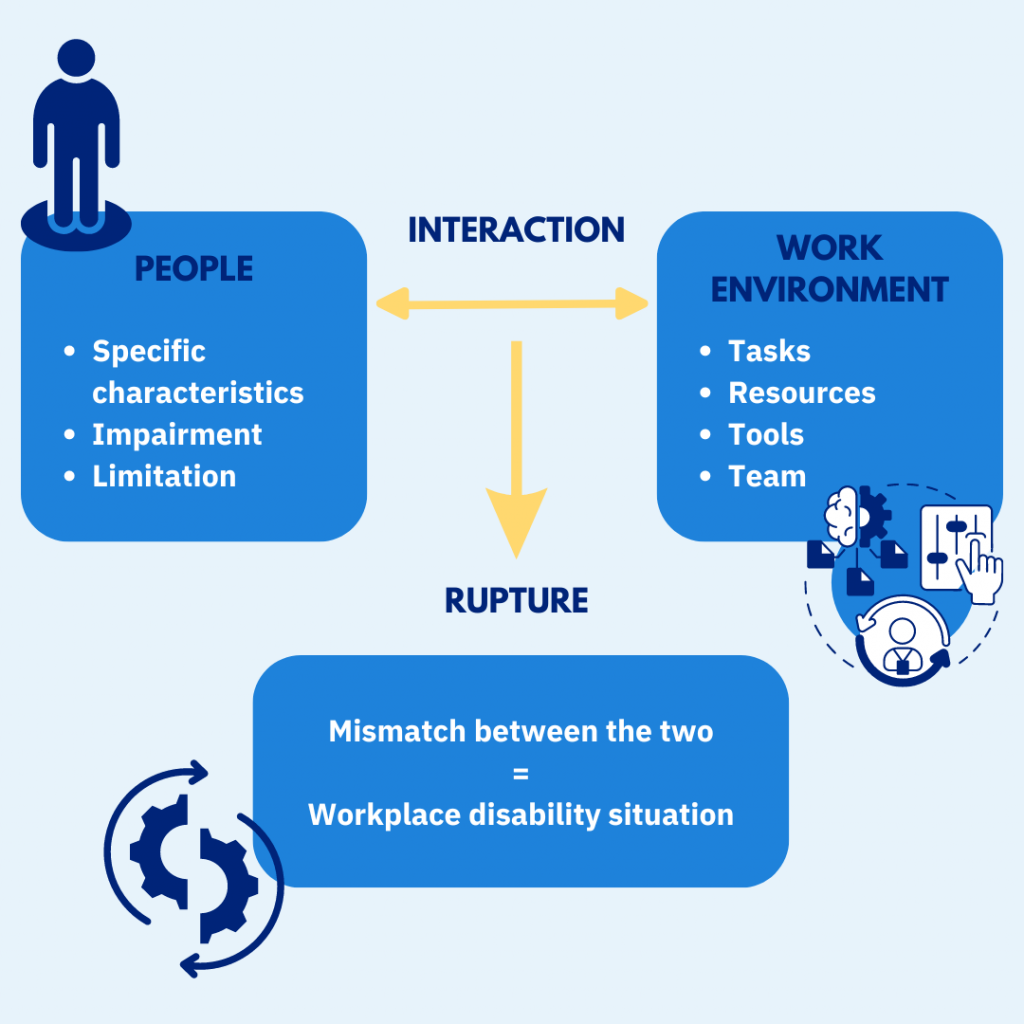Job Retention : Have you considered ergonomics for your employees ?
Work-related wear and tear and societal challenges :
In a demographic context where the French workforce is aging, and recent reforms aim to delay the legal retirement age, questions regarding work-related hardship, professional wear and tear, and job retention are more relevant than ever.
To address job retention issues, it seems essential to clarify some concept s:
Professional wear and tear are defined by ANACT (National Agency for the Improvement of Working Conditions) as a process of deterioration of workers’ health in one or more dimensions : physical, psychological, and social.
It arises in the context of work and depends on various factors:
- The accumulation and/or combinations of exposures to work constraints for individuals.
- The types of constraints to which individuals are exposed.
- Processes of health construction through regulations, the promotion of autonomy and margins of maneuver (collective, experience, etc.), and the emergence of construction factors (meaning, usefulness, profession, etc.).

Employees’ exposure to a certain level of work-related wear and tear can lead to the emergence of disabling situations. This context, in which an individual finds themselves in a degraded work situation due to difficulties related to their health and functional abilities, can then lead to a reduction in their work capacity. The pursuit of their activity to maintain an equal level of performance is also affected.
Without early detection of these situations, a person can quickly find themselves in a situation of work disability. Work disability is defined as the inability of a person, due to health issues, to perform all tasks assigned to them within the framework of their work environment.
Here, we encounter a mismatch between the individual and their work environment.
To limit employees’ exposure to these challenging situations that can lead to incapacity (declared when no measures of accommodation or adaptation of the current workstation are possible, which may subsequently lead to dismissal due to incapacity), initiatives for job retention emerge as a necessary response to these societal challenges.
Job retention :
Job retention encompasses all conditions that allow workers facing difficulties to continue in their job while maintaining their employment in circumstances compatible with their health condition. It also promotes the continuation of their professional career by reducing the likelihood of job loss due to incapacity in their position.
It falls under the obligations of the employer concerning the rights and guarantees for disabled workers, as specified in Article L5213-6 of the Labor Code: “In order to ensure respect for the principle of equal treatment of disabled workers, the employer, according to the needs in a specific situation, takes appropriate measures to enable workers […] to access or maintain a job corresponding to their qualifications, to exercise it or to progress in it, or to receive training adapted to their needs.”
Job retention relies on identifying a situation of incapacity or risk of incapacity in the workplace, linked to a disability, illness, or health condition that may hinder or prevent the completion of tasks required for the job.
The contributions of ergonomics to job retention :
The ergonomist, an expert in activity analysis and focused on adapting work to humans, is a significant player who can contribute to a job retention initiative.
In their intervention methodology, the ergonomist aims to characterize constraints and resources in a disabling work situation, thus facilitating reflection on identifying compensatory solutions for the disability situation. Adopting a multidisciplinary and participatory approach involving various stakeholders (supervisors, employees, occupational physicians, etc.), their dual health-performance objective aims to provide working conditions adapted to the employee’s disabilities, allowing them to continue their activity in a compromise of alignment between the individual, their disability(ies), their workstation, and their tasks for the company.
Beyond an individual approach to “disabled person,” their focus on the work environment (and thus the “disabling situation”) provides insights into the adaptation of the work situation.

Looking further ahead :
Beyond corrective actions to transform positions or work situations for job retention, the ergonomist’s approach can also inform reflection on the design of situations to prevent incapacity.
The multidisciplinary approach can thus aim to develop work systems that are more conducive to preserving and developing workers’ resources, considering future needs and evolving situations.
Preventing work-related wear and tear is therefore the preferred approach for sustainable job retention. This is why ergonomic design interventions are a real lever for addressing these workplace health issues and improving performance at both the individual and company levels. Similarly, it can help structure broader discussions to better address issues of accessibility, inclusion, and employment integration for people with disabilities.

Nicolas Turmel
Ergonome, IPRP chez Moovency
